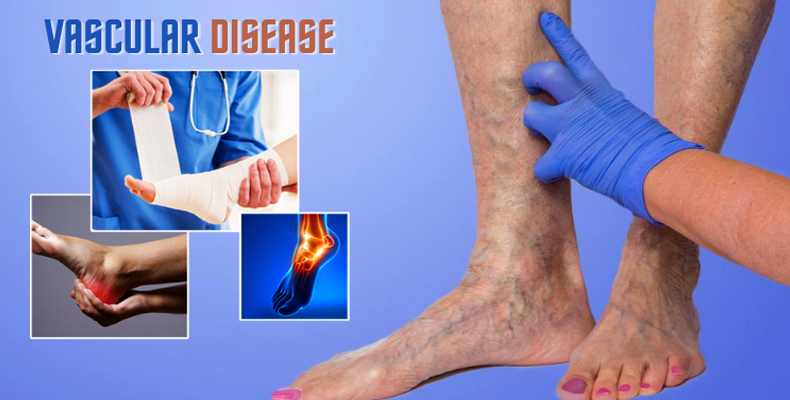
Vascular Disease
Vascular disease refers to a range of conditions that affect the blood vessels, including arteries, veins, and capillaries. These conditions can impact the flow of blood throughout the body, potentially leading to various health problems. There are several types of vascular diseases, each with its own causes, symptoms, and treatments. Here are some common types of vascular diseases:
-
Atherosclerosis:
- Atherosclerosis is a condition characterized by the buildup of plaque (composed of cholesterol, fat, calcium, and other substances) on the inner walls of arteries. This buildup can narrow the arteries and restrict blood flow, leading to complications such as coronary artery disease, carotid artery disease, and peripheral artery disease.
-
Peripheral Artery Disease (PAD):
- PAD occurs when there is atherosclerosis in the arteries that supply blood to the limbs, usually the legs. This can result in symptoms such as leg pain, cramping, and reduced blood flow to the extremities.
-
Carotid Artery Disease:
- Atherosclerosis in the carotid arteries, which supply blood to the brain, can lead to carotid artery disease. If the plaque ruptures or a blood clot forms, it may block blood flow to the brain, increasing the risk of stroke.
-
Aneurysm:
- An aneurysm is a bulge or weakening of a blood vessel wall. Aneurysms can occur in various arteries, such as the aorta (aortic aneurysm) or cerebral arteries (brain aneurysm). If an aneurysm ruptures, it can be life-threatening.
-
Deep Vein Thrombosis (DVT) and Pulmonary Embolism (PE):
- DVT is the formation of blood clots in the deep veins, usually in the legs. If a clot breaks loose and travels to the lungs, it can cause a pulmonary embolism. Both conditions are part of the spectrum of venous thromboembolism (VTE).
-
Raynaud's Disease:
- Raynaud's disease is characterized by the narrowing of small arteries, usually in the fingers and toes. This can result in reduced blood flow, leading to color changes in the affected areas and sensations of numbness or tingling.
-
Vasculitis:
- Vasculitis is inflammation of the blood vessels, which can affect arteries, veins, and capillaries. Depending on the type and severity, vasculitis can cause a range of symptoms and complications.
Diagnosis and Treatment:
Diagnosis of vascular diseases often involves a combination of medical history, physical examination, imaging studies (such as ultrasound, CT scans, or angiography), and blood tests. Treatment options vary based on the specific condition but may include:
- Lifestyle modifications (e.g., diet, exercise, smoking cessation)
- Medications (e.g., antiplatelet agents, anticoagulants, statins)
- Endovascular procedures (e.g., angioplasty, stenting)
- Surgical interventions (e.g., bypass surgery)
- Management of underlying conditions contributing to vascular disease
Management and prevention strategies aim to reduce symptoms, prevent complications, and improve overall vascular health. It's essential for individuals with risk factors or symptoms of vascular disease to seek medical attention for a comprehensive evaluation and appropriate management.